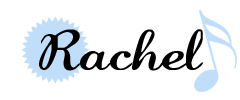I still find it somewhat magical that I get to be the person who introduces so many children to the concept of reading notated music. I know that there are many diverse musical cultures around the world that have no use for our western system (many would argue that American Pop music is among them), but I still think of "reading music" as one of the most major things that a child should be able to do when they leave my class. My third graders are getting their very first introduction to it this week, so I thought I would take a few minutes to share my thoughts on the subject.
When to start?
I know a lot of teachers have varying opinions on the subject. I've seen teachers wait until 5th grade and some start as early as 1st.
I start in third grade to prepare for their recorder unit (and sometimes I may do a little taste of it at the end of 2nd grade, depending on the class).
How to present the info?
Even though I don't teach the treble clef notes until third grade, my students start reading from basic staff lines in Kindergarten. By the time they are ready to start letter names in third grade, they have already done the following in earlier years:
- conceptualized where high and low sounds will be on the staff
- learned the difference between line notes and space notes
- placed solfege on a two-, three-, and five-line system
All of this has prepared them to easily replace solfa names with letter names on the staff. (I continue movable do solfege through fifth grade.)
Activities for Kinesthetic Learners

Image source: Mr. Jack's Grade 5/6 Music
- Have every child use a "hand staff" while reciting an EGBDF mnemonic device.
- Floor staff made out of masking tape (or one of these epic rugs, which I am fortunate enough to have at one of my schools this year!)
- Bean bag toss game:
 |
| I made this for when I teach on a cart... electrical tape on a padded table cloth. |
That blurry thing flying across the room is an elephant beanie baby. I say a note name and the student has two tries to get it to land on the correct line or space.
Activities for Visual Learners
- SmartBoard review games. This year I am using MineStaff by Music With Sara Bibee. Last month we used my product, Cookie Capers.
- Create a new mnemonic device for the line notes and illustrate it with this free worksheet from Jennifer Conn.
- Play this card game, Music Memory. This one is great as a center activity.
Activities for Auditory Learners
- Every Good Boy Deserves Football Song by Dan Barrow. My students are OBSESSED with this and request it over and over.
Last but not least... Don't forget to MAKE MUSIC
All the theory drills, flashcards, and games in the world cannot replace the benefits that come from actually making music. I never want to lose sight of that. It is definitely fun to do review centers and play all these games, but I don't see this as the main focus of an elementary music class by any means. All these literacy skills must lay the foundation for a life of music playing and singing. Otherwise, what's the point?




Have you tried Staff Wars?? It's SO much fun! I use it as a center. Also Staff Detective, which I found on TPT somewhere and my kids LOVE to play in a large group or many small ones!
ReplyDeleteStaff Wars wouldn't open on my school computer! I tried it a few weeks before the break. Harumph. Can you link me to Staff Detective? I'd love to check it out!
ReplyDeleteGreat suggestions, Rachel! Thanks!
ReplyDelete